As soon as spring rolls in (and those Texas Bluebonnets start popping up!) I immediately find myself craving all things bright and citrusy—and nothing hits the spot quite like fresh lemons!
And right on cue, wild-caught salmon starts popping up at the grocery store. Between Lemon Dill Salmon and Air Fryer Fish, I’m all about pairing fresh seafood with zesty lemon this time of year.
That’s exactly why this Lemon Baked Salmon in Foil is on repeat in my kitchen. It’s got rich, buttery salmon, loads of garlic and fresh basil, and of course, a squeeze of tangy lemon juice—all wrapped up and baked to juicy perfection!
Ingredient Notes
Please see the recipe card at the bottom of the post for the exact measurements and detailed instructions.
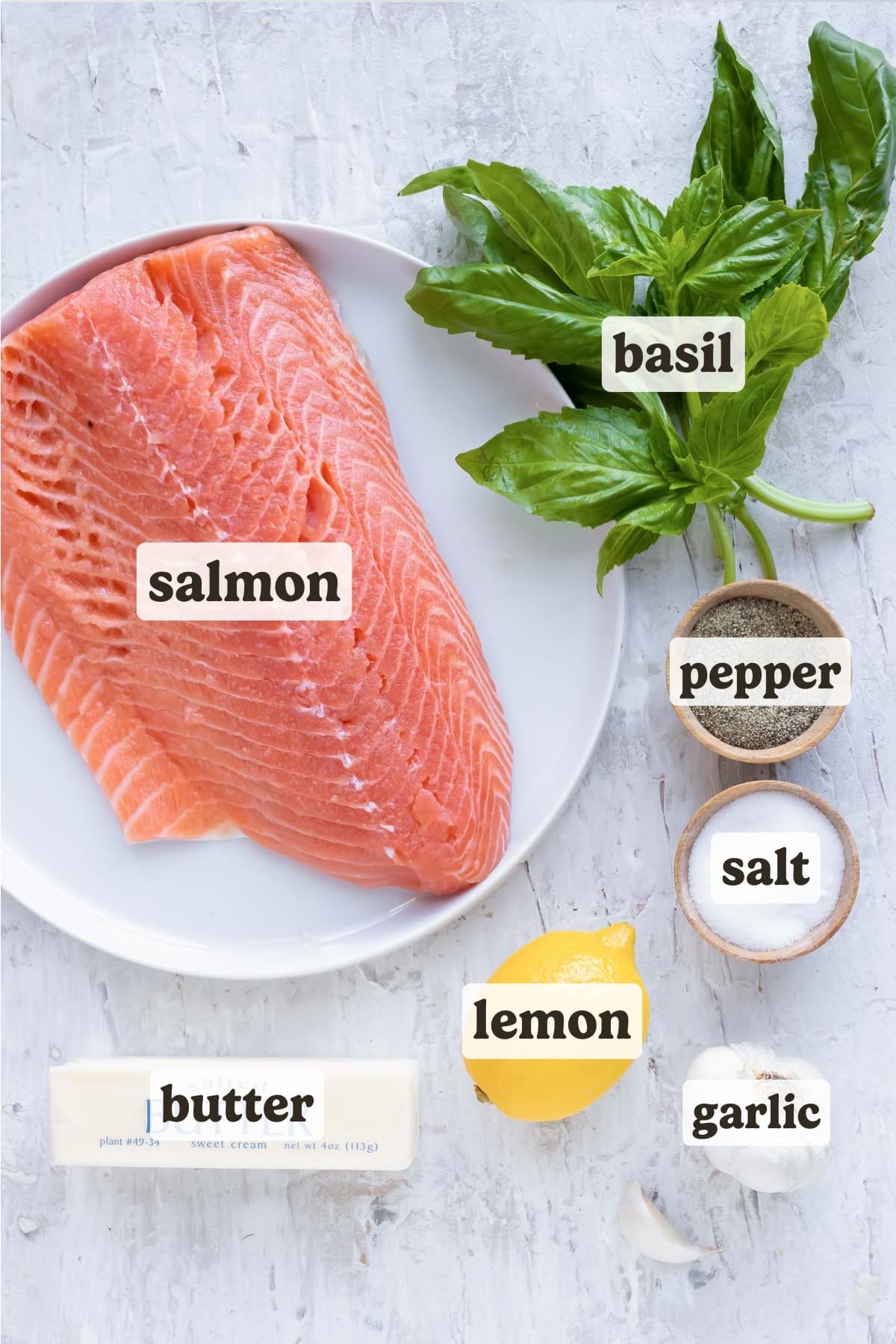
- Salmon. Both wild and farm-raised salmon have been tested in this recipe. Wild has a little more nutrition, while farm-raised will give you more flavor due to its higher fat content. Either way, fresh salmon is best, but frozen can be used. (See note below.)
- Lemons. Freshly-squeezed, natural juice from a lemon is a key ingredient. Avoid pre-squeezed, bottled lemon juice; it’s extremely tart and not nearly as fresh.
- Basil. Fresh basil, not dried, is the other star of the show. Sweet basil is preferred but Thai basil may also be used, as can dill or fresh cilantro for a different flavor. (Check out more substitutes for basil if you need help!)
- Butter. A good-quality butter, such as Plugrá or Kerrygold, will take this dish over the top with its rich flavor. A non-dairy butter alternative such as vegan “buttery” sticks can be subbed, or even swap for olive or avocado oil.
- Garlic. Finely minced fresh garlic cloves give a wonderful punch of flavor. I like using a garlic press to make sure it evenly disperses throughout the sauce.. You can substitute with garlic powder, at ⅛ teaspoon for each clove, but the flavor won’t be as rich.
How to Make Lemon Baked Salmon in Foil
Please see the recipe card below for the full instructions, ingredient amounts, and a printable recipe.
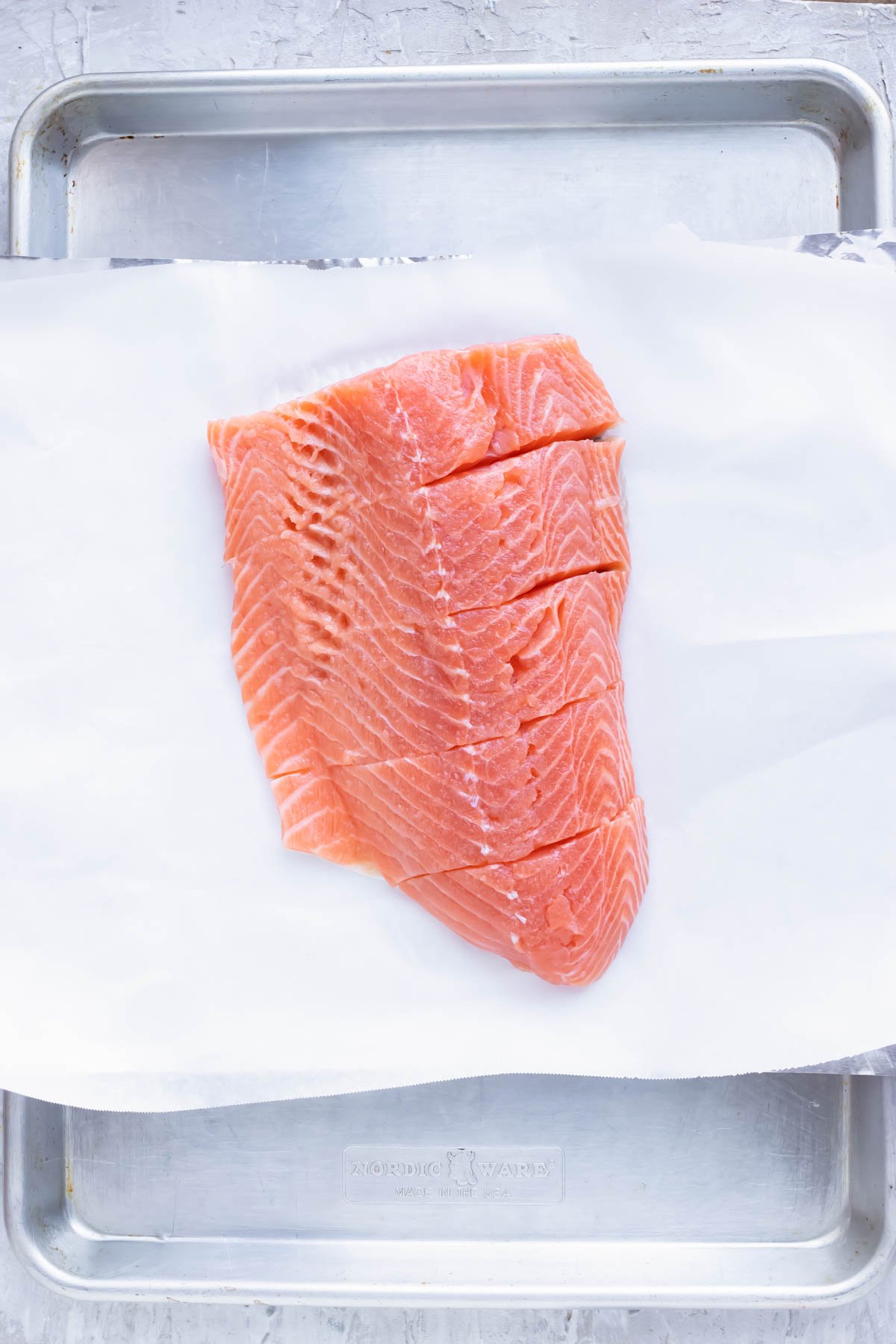
Step 1: Prep the salmon and foil packet.
Using a sharp knife, slice the salmon crosswise into 1½-2-inch portions (about 3-5 ounces per piece). Lay out a large sheet of aluminum foil on a sheet pan, then place a slightly smaller sheet of parchment paper on top. Arrange the salmon portions skin-side down, leaving a little space between them.
Pro Tip: A flexible filleting knife works best for slicing salmon cleanly, but any sharp knife will do!
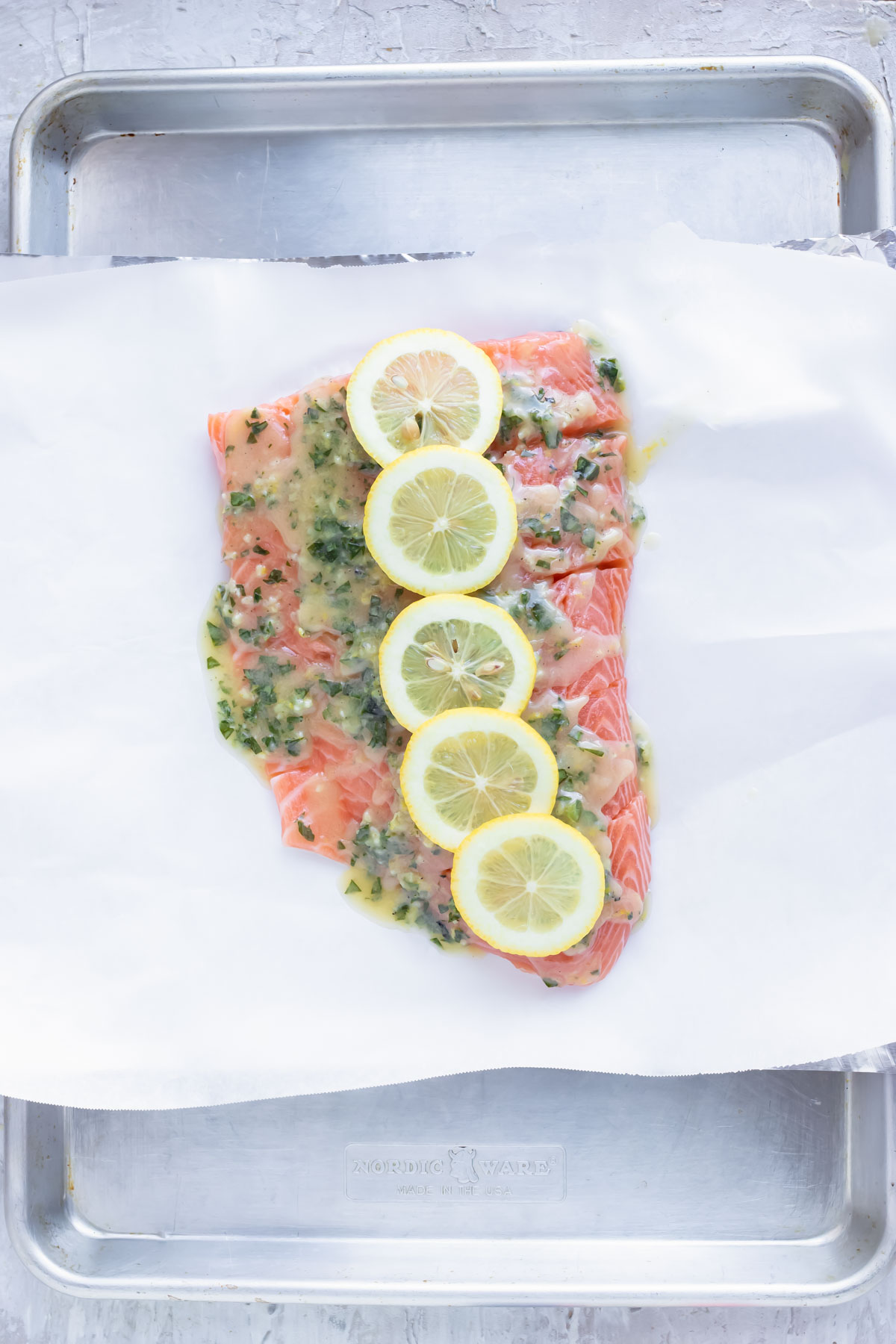
Step 2: Make the lemon garlic butter sauce.
Whisk together the melted butter, garlic, fresh basil, lemon juice, salt, and pepper in a small bowl. Spoon half of the sauce evenly over the salmon, making sure to coat every piece. Then top each portion with a thin lemon slice.
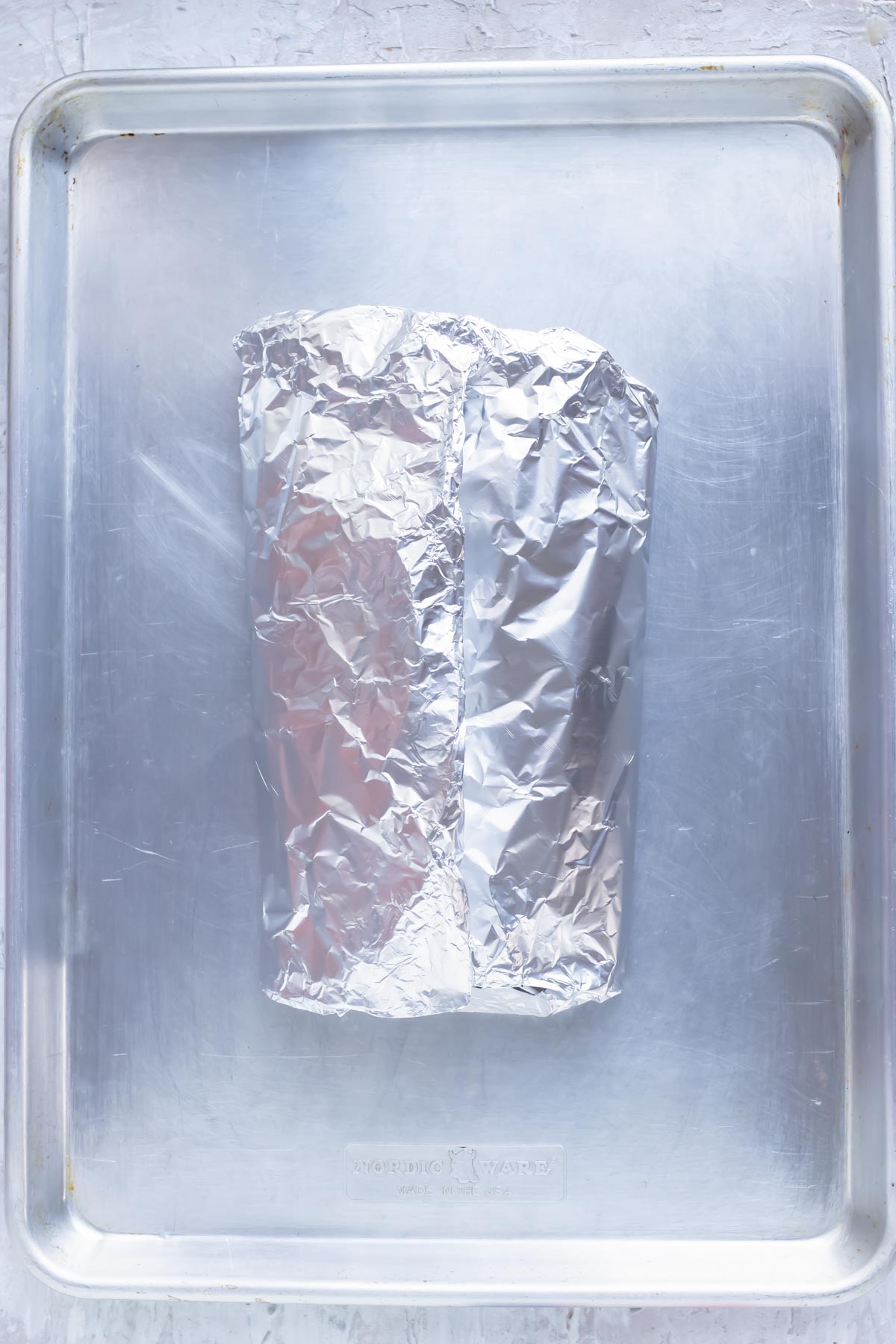
Step 3: Seal and bake in the oven.
Fold the parchment and foil over the salmon, sealing the edges tightly to create a packet. Make sure it’s sealed well so the sauce stays inside, but leave a little room for airflow.
Bake in a 375°F oven for 14-16 minutes, keeping the parcel closed the entire time.
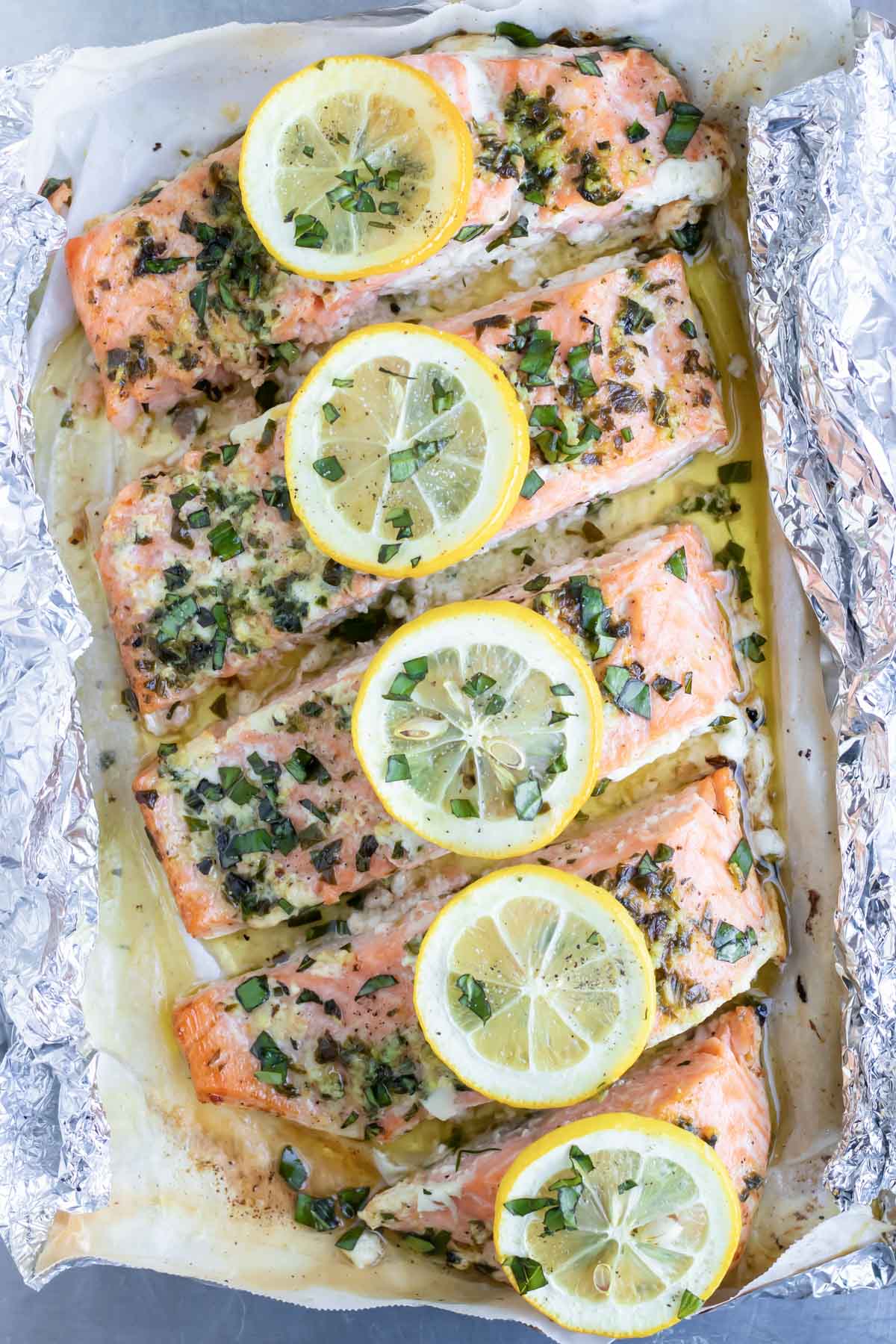
Step 4: Broil for a crisp finish.
Carefully open the foil parcel, pour the remaining sauce over the salmon, and fold the edges back to keep the butter contained.
Switch the oven to broil and return the pan to the oven for 5-7 minutes, or until the salmon is just starting to brown on top.
FAQs
Baking salmon in foil locks in moisture and helps it cook evenly without drying out. Plus, it makes cleanup super easy since all the juices stay contained in the packet!
Salmon is done when it reaches an internal temperature of 145°F at the thickest part. You’ll also know it’s ready when it flakes easily with a fork and turns from translucent to opaque pink.
Yes, but be sure to thaw it completely in the fridge overnight before baking. Pat it dry to remove excess moisture so the seasonings stick better and the texture stays firm.
Absolutely! You can bake it in a covered baking dish instead, but you may need to baste it halfway through to keep it from drying out.
Delicious Recipe Variations
- Make it a meal. While this recipe keeps things simple with just salmon, you can easily add veggies right to the foil parcel for a full meal! Try roasting cherry tomatoes, asparagus, zucchini, or baby potatoes alongside the fish for extra flavor and convenience.
- Boost the lemon flavor. Want even more bright, citrusy goodness? Add fresh lemon zest to the butter sauce before drizzling it over the salmon. It enhances the lemony kick without adding extra acidity.
- Switch up the herbs. While basil is a favorite, salmon also pairs beautifully with dill, rosemary, parsley, oregano, or thyme.
- Make it spicy. If you love a little heat, add red pepper flakes, a dash of sriracha, or even a few drops of hot sauce to the lemon butter sauce for a fiery kick!
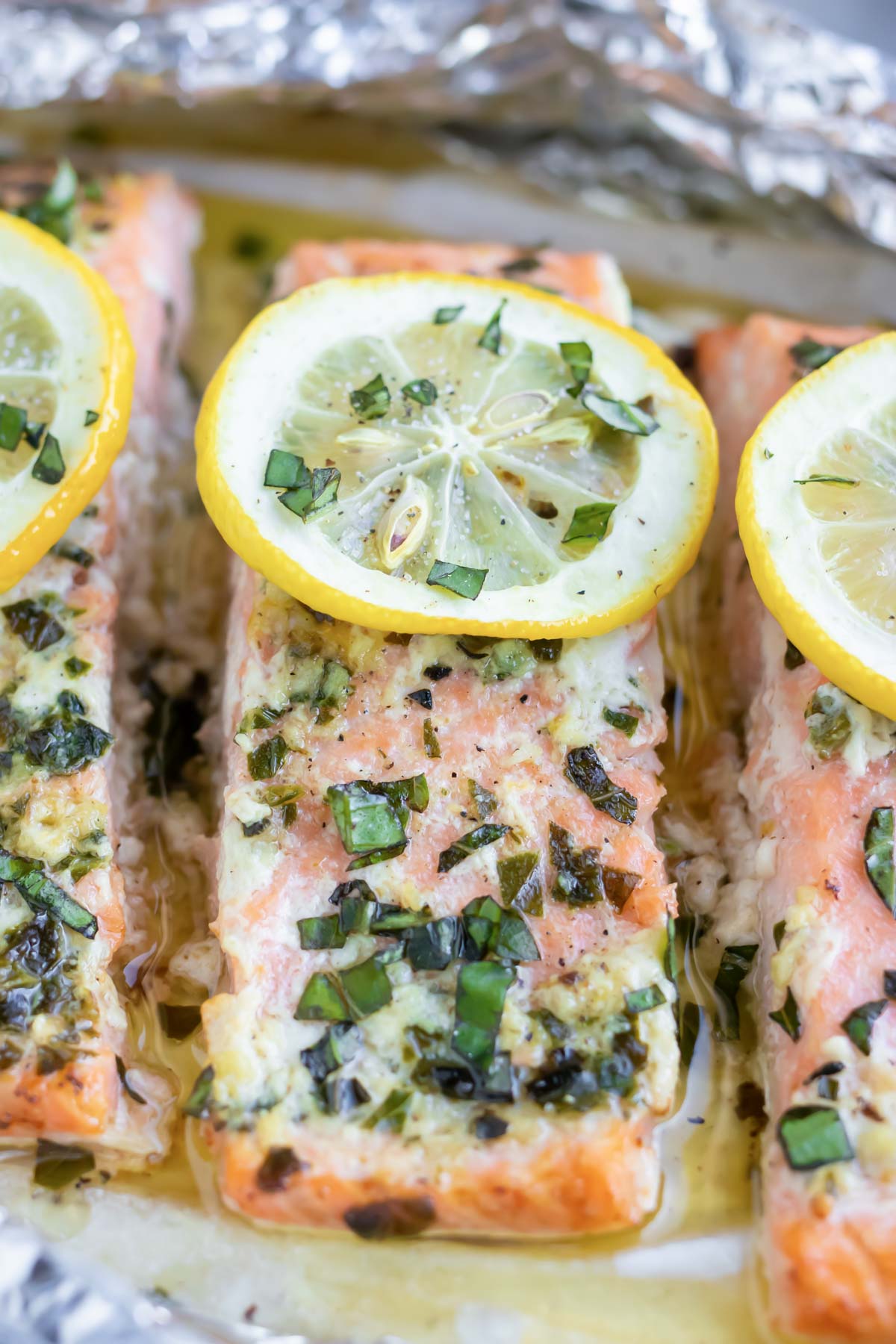
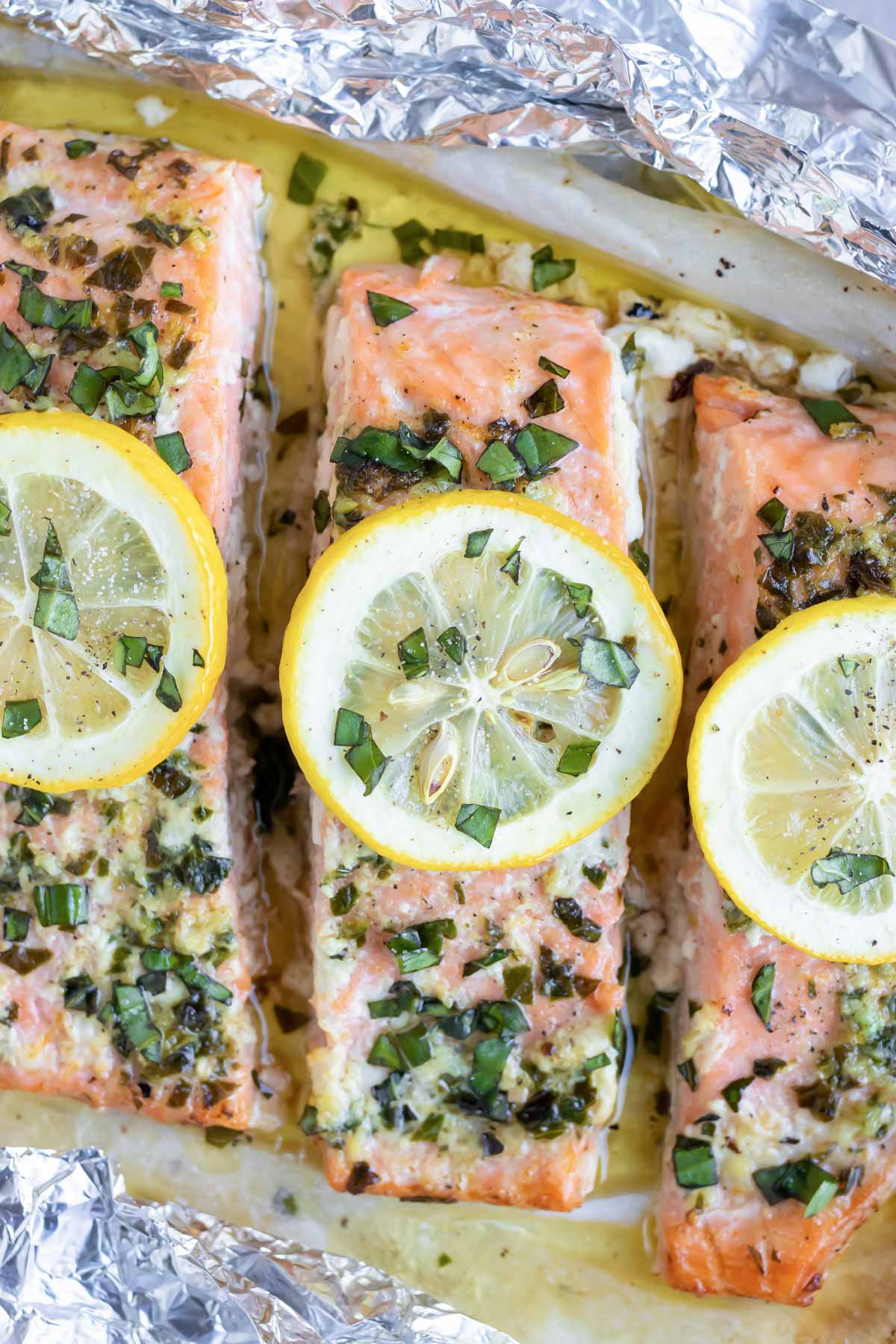
What to Serve with Baked Salmon in Foil?
This salmon makes an amazing main dish and goes great with SO many different sides. Here are some of my favorites:
Roasted Cauliflower, Honey Roasted Broccoli, and Roasted Sweet Potato Cubes are easy to make and taste great with the fresh lemon flavors.
If you want something heartier, these Boiled Carrots, German Potato Salad, and Zucchini and Squash Casserole would taste great!
You can also save time by making Air Fryer Brussels Sprouts, Air Fryer Broccoli, and Air Fryer Asparagus.
More Easy Salmon Recipes
Salmon is one of my favorite protein sources, and there are SO many ways to enjoy it. Try one of these delicious recipes next!
Tap stars to rate!
Lemon Baked Salmon in Foil Recipe
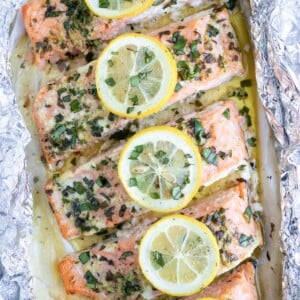
email this recipe!
Ingredients
- 1 ¼ pounds salmon skin on, cut into 5 fillets
- 5 tablespoons salted butter melted
- 2 garlic cloves finely minced
- 2 tablespoons finely chopped fresh basil
- 2 tablespoons lemon juice divided
- ¾ teaspoon salt
- ¼ teaspoon pepper
- 5 lemon slices
Instructions
- Preheat the oven to 375℉.
- Whisk melted butter, garlic, basil, lemon juice, salt, and pepper in a small bowl.5 tablespoons salted butter, 2 garlic cloves, 2 tablespoons finely chopped fresh basil, 2 tablespoons lemon juice, ¾ teaspoon salt, ¼ teaspoon pepper
- Place a large sheet of aluminum foil on a baking sheet. Layer a piece of parchment paper that is slightly smaller than the foil on top. Place salmon fillets on the paper with a slight gab between each one.1 ¼ pounds salmon
- Pour half of the lemon-basil sauce over salmon fillets. Reserve the remaining sauce for later. Top each fillet with one lemon slice.5 lemon slices
- Close paper and aluminum foil around salmon to make a packet. Bake salmon for 14-16 minutes without undoing the foil packet.
- Open the foil packet, pour the remaining lemon-basil sauce over fillets and return salmon to oven under a High broil for 5-7 minutes. (Make sure you tear off or fold down any parchment paper that might be sticking up so it doesn't burn!)
Tap stars to rate!
Video
Notes
- Salmon: If purchasing salmon as a whole piece, instead of pre-cut fillets, opt for a center cut piece so it cuts up more evenly in the oven.
- Fresh is key: Fresh garlic, lemon juice, and basil were used when testing and really up-level the flavor a ton!
- Garlic: Use a garlic press for the most finely minced garlic so it will evenly disperse throughout the sauce.
- Storage: Leftover salmon can be stored in an airtight container in the refrigerator for up to 3 days or frozen for up to 3 months.
- Reheating: The best way to reheat this baked lemon salmon is to pop it back into a 300°F oven for 5-7 minutes. You can also heat it up in a covered skillet over medium-low heat for 4-5 minutes.
Nutrition
Nutrition information is automatically calculated, so should only be used as an approximation.
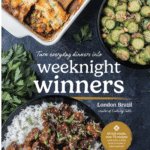
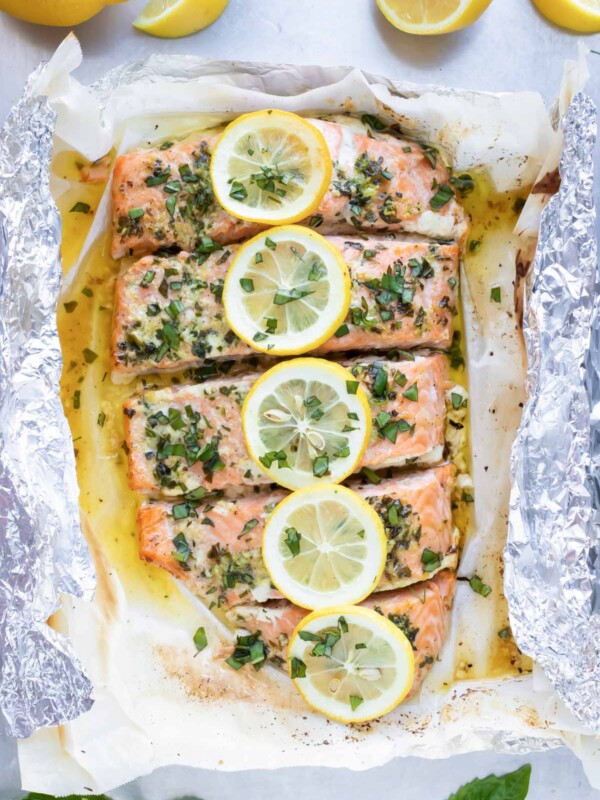
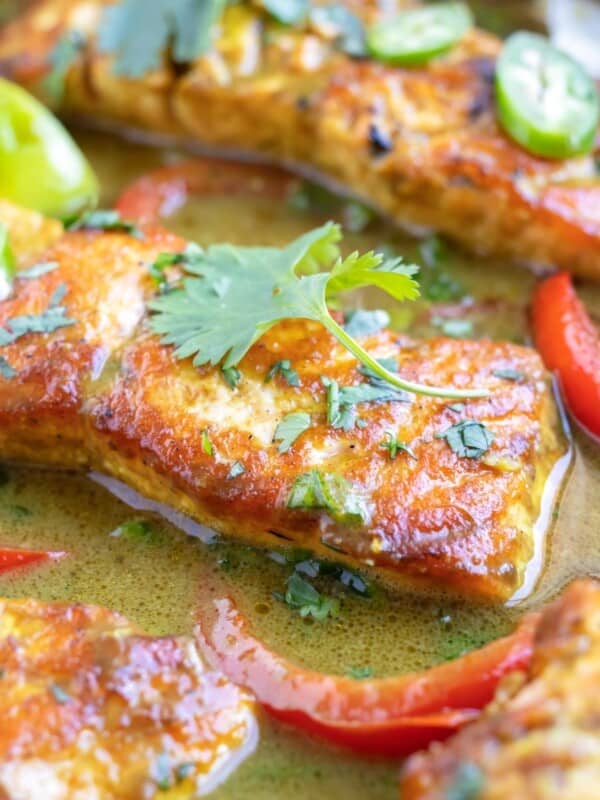
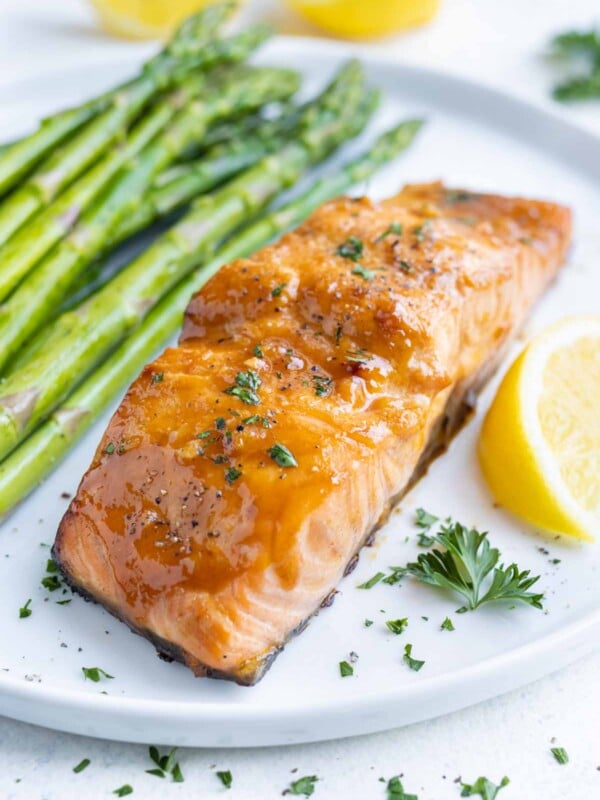
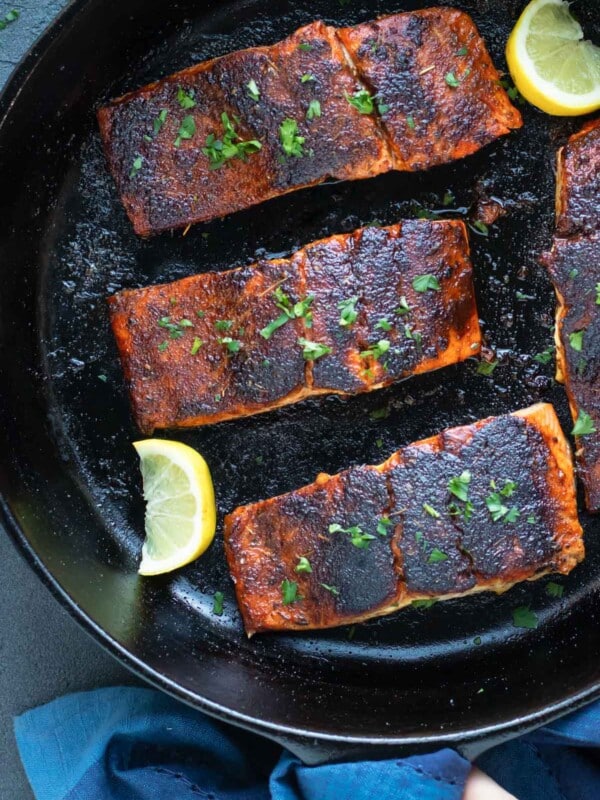

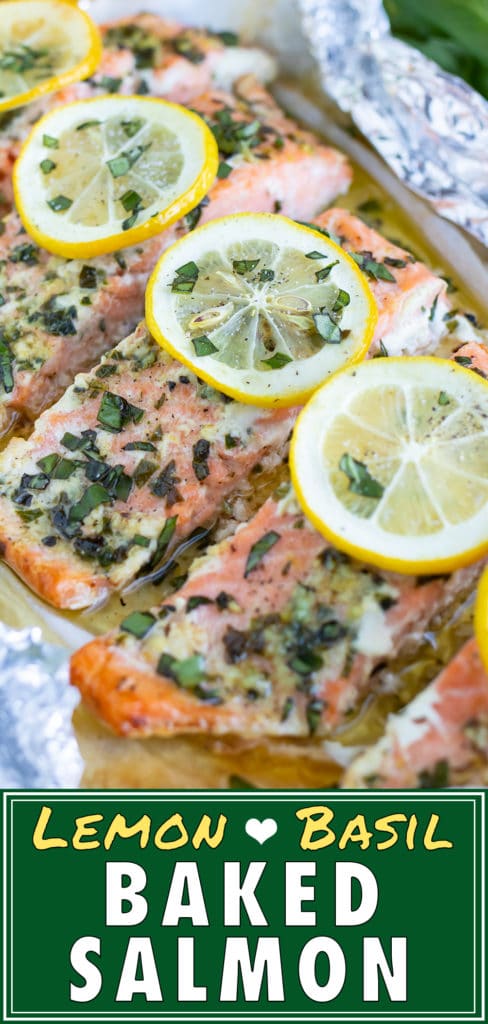
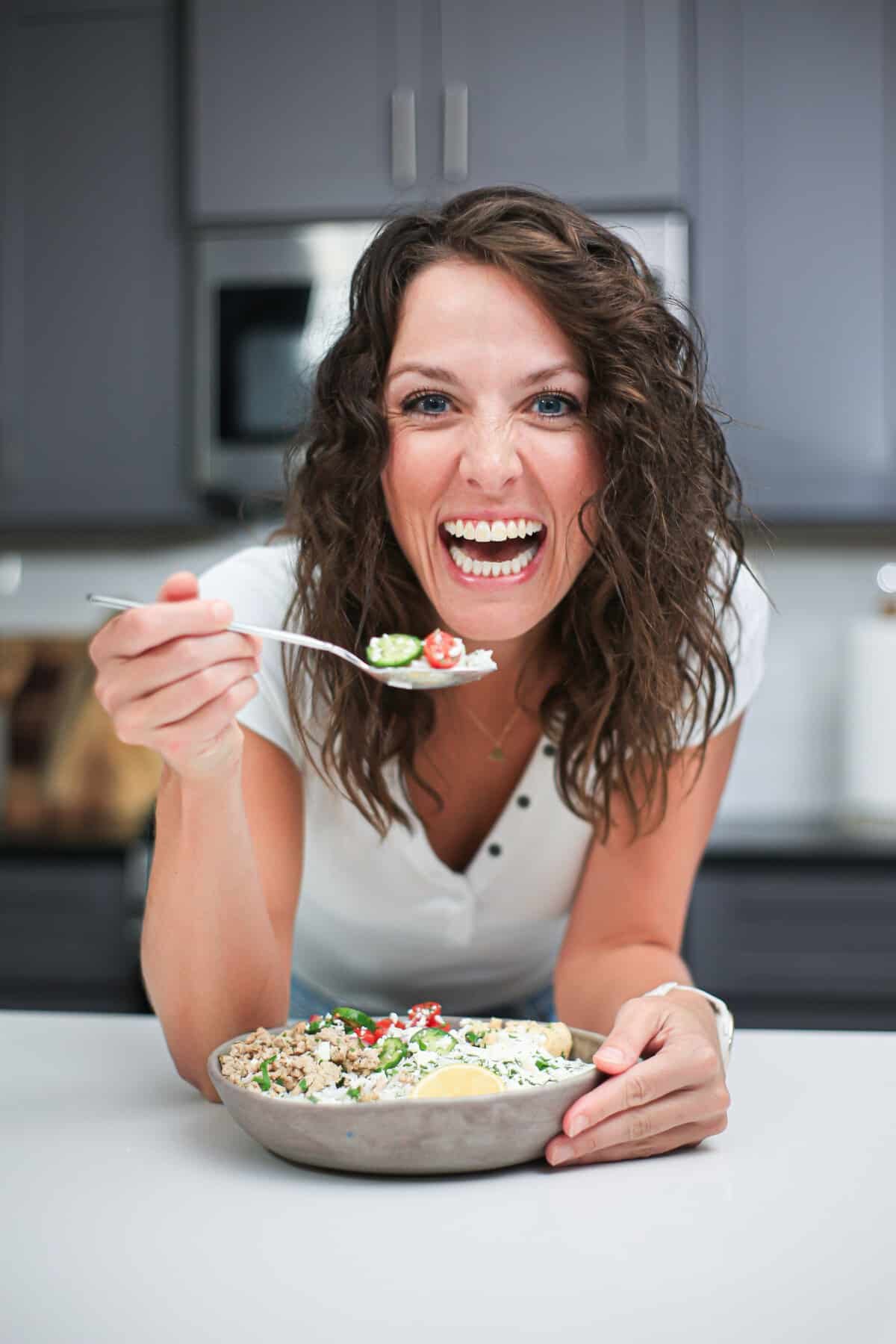
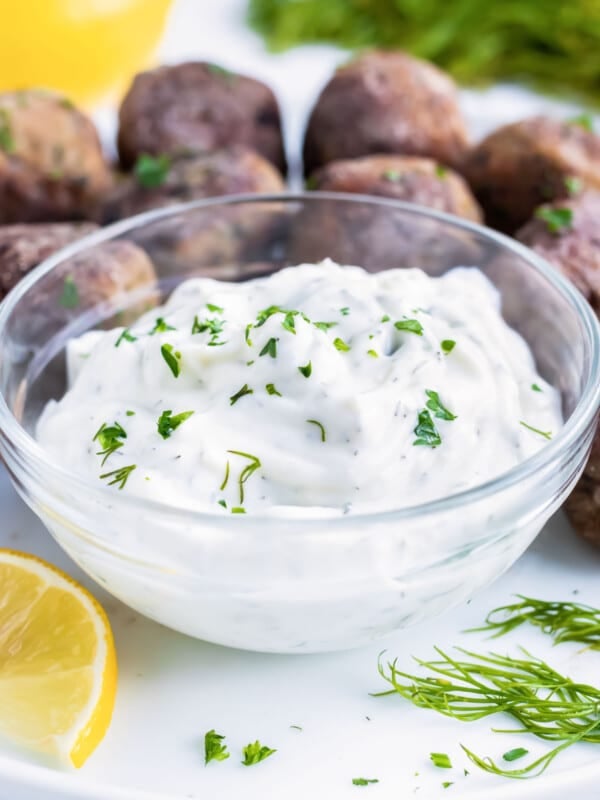
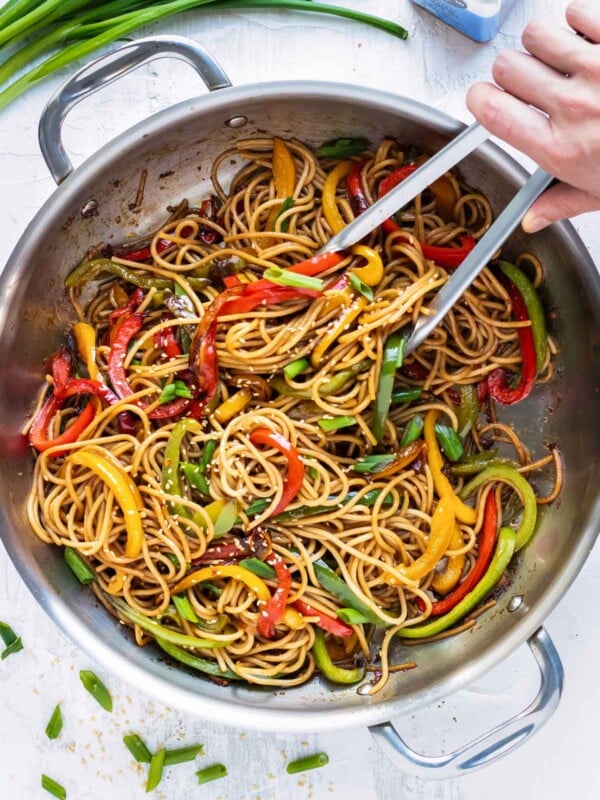
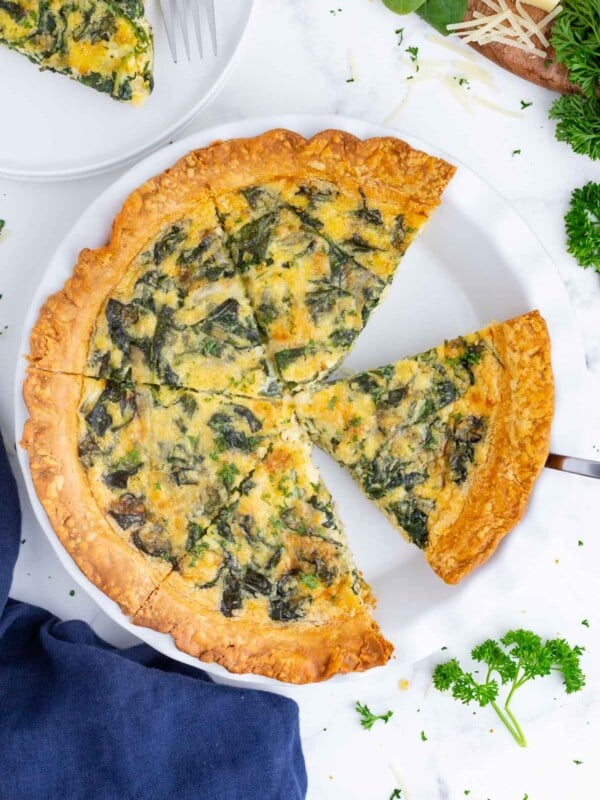

It is probably a matter of preference, but when I made this according to the recipe, the garlic and citrus clashed and made everything weird. I now omit the garlic and my husband and I love it!
That’s a great idea to just leave it out, Nikki. We LOVE garlic in our house so it’s in everything 🙂 But each recipe is always up for adaptation to your taste preference. Thanks so much for your comment and rating!
I’ve made this a couple of times now. It’s an astonishingly simple way to get a fabulous result. This will be in my regular rotation!
Yay! So happy you enjoyed the recipe, Susan. Thanks for your comment and rating!
This is the first time I used my broiler. I was quite nervous to use it, but it turned out great!! It was very easy prepping this dish and quick to cook it. The flavor could not be beat in any restaurant!!
Yay, Kent! The broiler can definitely be a bit scary, but I’m so happy to hear you braved it. It definitely makes a difference on the texture of the salmon! Thanks so much for your comment and rating 🙂
This was really good. My only suggestion is not to broil this. The parchment paper burned due to the high heat.
Thanks for the feedback, Bob! I forgot to mention that I normally rip off any of the extra parchment paper so it doesn’t burn under the broiler – I’m including that now! Thanks so much for your comment and rating 🙂
This recipe was delicious! I did have to double the recipe for my family of five, I found that we needed 2 1/2 lb of salmon. I paired it with potatoes and asparagus and everyone was full by the end of the meal! The simplicity and easy step by step video made this recipe quick and stress free!
Oh that sounds like a delicious meal, Ash! So happy the family enjoyed it. Thanks for your comment and rating!
How am I JUST now finding out about the recipe?! This is absolutely incredible and delicious. 12/10 will make again!
Yay, Kayla!! So happy to hear you enjoyed the salmon recipe. Thanks for your comment!
Love this recipe!! Thanks for sharing such a healthy option! Is there any way to substitute chicken in for the salmon and would it cook for the same amount of time?
So happy to hear that, Cara! You definitely can substitute in chicken for the salmon but you’ll need to increase the cook time. Try pounding your chicken to 1-inch thick and then baking at 350 degrees for 25 minutes, or until the internal temp reaches 165 degrees. Excited to hear how it turns out for you!
Made it on Monday night for dinner with couscous as a side. Used fresh basil my our garden. It was so easy & delicious!
Question: Doesn’t parchment paper burn under the broiler?
Yay! So happy you enjoyed the recipe. And yes, parchment paper can burn under the broiler if it gets too close. So I would just make sure to keep a close eye on it. Thanks so much for your comment and rating!
How would the recipe change if the salmon was frozen?
Hi Michelle! Great question – I would definitely defrost the salmon before baking it, otherwise you will end up with quite a bit more liquid (water) than you would like, an uncooked center, and overcooked outer. Hope this helps you a little bit!!
Great thanks so much! I’ve done this recipe twice and it’s sooooo delicious.
So happy to hear you have enjoyed it so much, Michelle!! 🙂
Hi. This recipe looks amazing! Is there a way to keep butter out of the recipe or substitute it for something else? Thank you.
Hi Lara! Yes! There absolutely is. My suggestion would be to get the vegan “butter” sticks by Earth Balance or another DF butter substitute (that still has that butter flavor). You can also use avocado or olive oil, too!